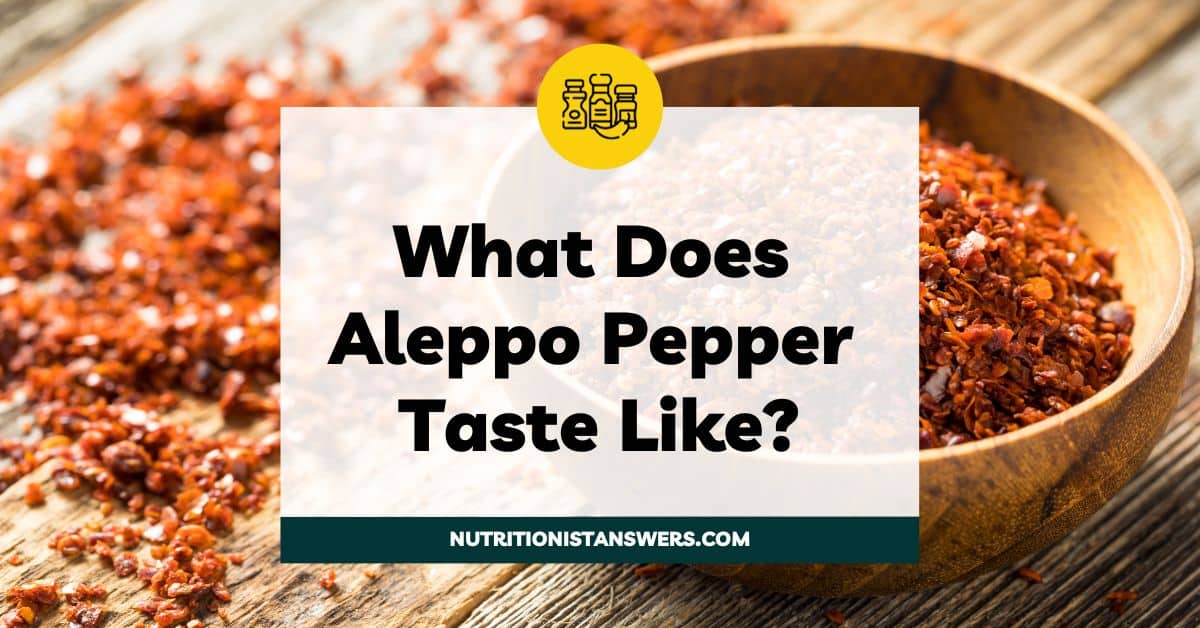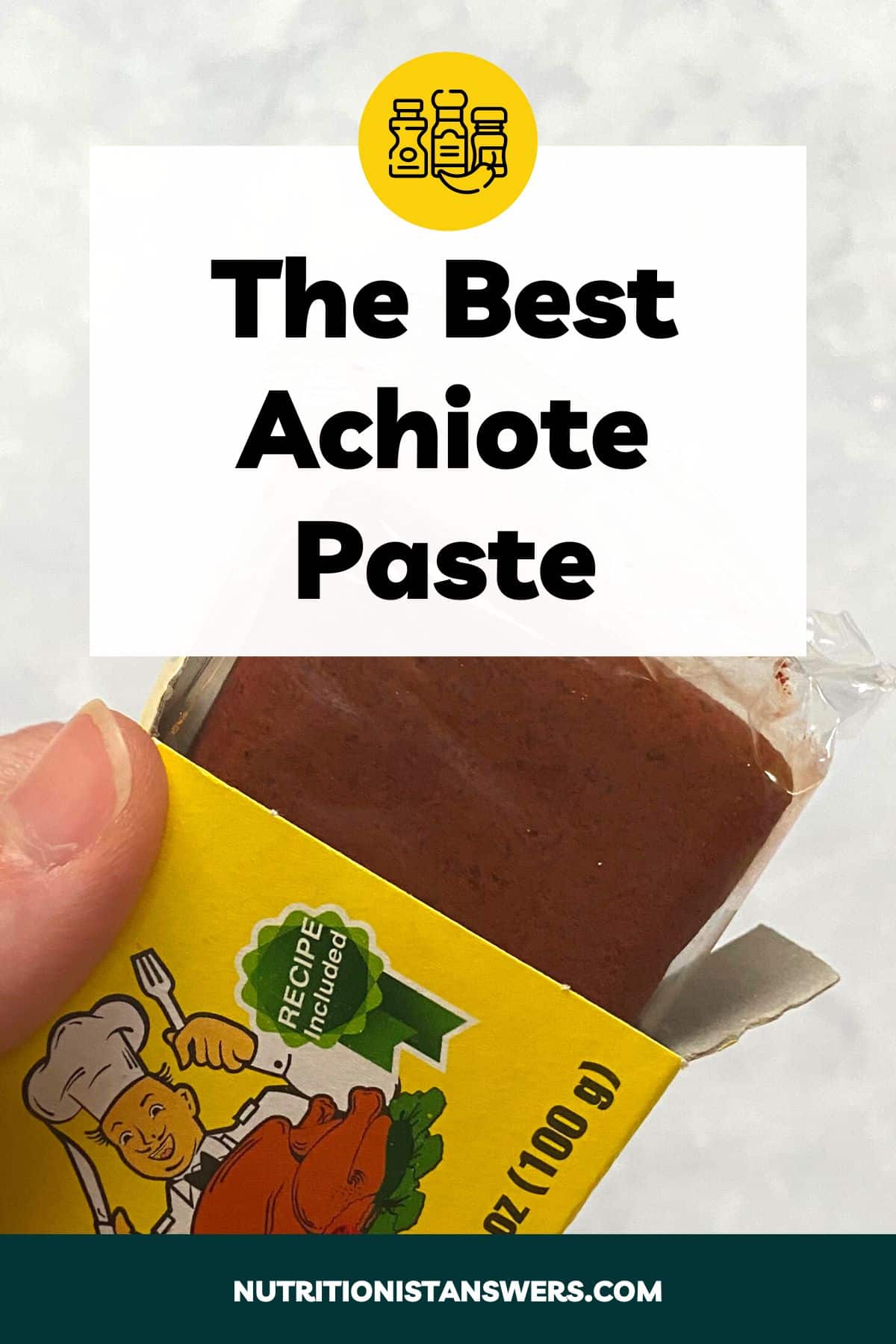At first glance, Aleppo pepper may appear no different than ordinary crushed red pepper, similar to what you’ll find in most spice racks throughout the United States.
However, looks can be deceiving. This Middle Eastern spice stands out with its complex flavors, mild heat, and versatility in the kitchen.
If you’ve ever been curious about what Aleppo pepper actually tastes like, and what makes it different than other hot peppers, you’re in the right place.

Aleppo pepper has mild heat and bright flavors
Aleppo pepper flakes have a complex flavor profile that combines sweet, fruity, and earthy elements with a mild heat and a hint of saltiness.
Aleppo pepper’s flavor profile carries subtle hints of sun-dried tomato, a touch of raisin-like sweetness, a cumin-like earthiness, and a gentle citrus note reminiscent of lemon.
Some people have described Aleppo pepper as a spicier, less smoky version of ancho peppers. However, that comparison doesn’t fully capture Aleppo pepper’s brighter, more acidic flavor notes.
Aleppo pepper has a soft, oily texture due to the olive oil that is added during processing. This brings a richness that can’t be replicated with ordinary crushed red pepper.
How spicy is Aleppo pepper?
Aleppo pepper flakes are mildly spicy, with a slow-building heat that’s about half as intense as the crushed red pepper (made from cayenne peppers) found in most supermarkets.
On the Scoville scale, Aleppo pepper ranges from 5,000 to 10,000, which is technically hotter than jalapenos (1).
However, much of the Aleppo pepper’s spiciness is lost when the seeds, which contain higher concentrations of capsaicin, are removed during processing (2).
Aleppo pepper is high in flavonoids
Because it is typically consumed in small quantities, Aleppo pepper is unlikely to contribute many calories or macronutrients to your overall diet (much like other spices used in cooking).
However, Aleppo pepper is high in flavonoids, compounds with antioxidant and anti-inflammatory properties (3, 4).
Aleppo pepper also contains capsaicin, the chemical responsible for the spiciness in chile peppers, which acts as an antioxidant and natural pain reliever (2, 3, 5).
How is Aleppo pepper made?
Aleppo pepper (also called Halaby pepper) is a chile pepper named after Aleppo, a city located in northern Syria where it is believed to have originated.
Before the Syrian civil war, Aleppo pepper was imported directly from Aleppo. Now, most products labeled “Aleppo pepper” are actually sourced from southern Turkey, just north of Aleppo.
Many Turkish farmers have started to grow Aleppo pepper using seeds from Syria. However, some Aleppo pepper products are actually made from Marash peppers, a close relative.
Aleppo peppers are rarely used in their fresh form. Instead, they are de-seeded, sun-dried, and coarsely ground, then mixed with salt and olive oil before being allowed to dry completely.
The oil and salt give Aleppo pepper flakes a shiny appearance and a softer texture than typical crushed red pepper. They also help preserve its complex flavor and rich, burgundy color.
Where to buy Aleppo pepper
Fresh Aleppo pepper is rarely available outside of the places where it is grown. Instead, Aleppo pepper is sold almost exclusively as dried, crushed pepper flakes.
Aleppo pepper flakes typically aren’t sold at chain supermarkets, even those that have an international foods section. Your best bet is to visit Middle Eastern or Mediterranean food markets.
Another option is to purchase Aleppo pepper flakes online. Here are some of the most popular Aleppo pepper products on Amazon:
How to store Aleppo pepper
Dried Aleppo pepper flakes should be kept in an airtight container and stored in a pantry or cabinet, away from light and heat. They should retain their flavor for about 3 years.
To extend their shelf life, Aleppo pepper flakes can also be stored in the freezer. However, this might be inconvenient if you use them regularly.
Spices begin to lose some of their taste, aroma, and spiciness over time, so if yours have been in the pantry for a while, you may need to use more to achieve the flavor intensity you’re looking for.
Ways to use Aleppo pepper
1. As a condiment
Aleppo pepper is fantastic as a condiment, offering a customizable spice level and a bright, fruity flavor that pairs well with a wide range of dishes.
In the Middle East, Aleppo pepper is sprinkled over everything from grilled meats and kebabs to salads and roasted vegetables, enhancing the dishes with its mild heat and fruity undertones.
It’s also common practice to steep Aleppo pepper flakes in olive oil, resulting in a vibrant red oil that’s perfect for dipping bread or drizzling over pasta, pizza, and even popcorn.
2. Marinades and dry rubs
Aleppo pepper is often used in marinades and dry rubs for seasoning grilled and roasted meats, adding both a subtle heat and a burst of flavor.
You’ll find Aleppo pepper featured in Middle Eastern grilled chicken wings, doner kebab (rotisserie-style meat), and kofta (spiced meatballs made with beef or lamb).
3. Egg dishes
Aleppo pepper can elevate just about any egg dish, bringing heat, tanginess, and hints of fruity flavor to scrambled eggs, omelets, frittatas, and quiches.
Many Mediterranean egg dishes call for Aleppo pepper, including menemen (Turkish-style scrambled eggs) and shakshuka (eggs poached in a spicy tomato sauce with vegetables).
4. Dips and spreads
Aleppo pepper is perfect for spicing up your favorite dips and spreads, elevating them with its mild heat and fruity, tangy flavor.
You’ll find Aleppo pepper in classic dips like baba ganoush (creamy eggplant dip), muhammara (roasted red pepper dip), and hummus (pureed chickpeas with sesame paste).
5. Soups and stews
Aleppo pepper can be used as a seasoning or garnish for soups and stews, infusing them with a subtle heat and peppery taste.
You can use Aleppo pepper in Mediterranean favorites like Turkish lentil soup, Italian minestrone, and ali nazik (lamb stew).
6. Fruits and desserts
Aleppo pepper’s mild heat and fruity undertones pair nicely with tropical fruits, such as mango, pineapple, and watermelon, and can also enhance rich, chocolate-y desserts.
Try sprinkling a pinch of pepper flakes over freshly grilled mango, or add a teaspoon to your favorite brownie or chocolate cake recipe.
Final thoughts
Aleppo pepper is a Middle Eastern spice with a mild heat and a complex flavor that’s sweet, fruity, and earthy with notes of sun-dried tomato, raisins, cumin, and citrus.
Like other spices, Aleppo pepper won’t contribute many calories or macronutrients to your diet. However, it is high in antioxidant compounds such as flavonoids and capsaicin.
Aleppo pepper can be used to enhance a diverse array of dishes, from grilled meats and soups to egg dishes, dips, and even desserts, infusing them with its unique tangy and mildly spicy flavor.
Amy Richter is a Registered Dietitian Nutritionist based in Missouri. She is an experienced nutrition writer and medical advisor for Healthline and Medical News Today. Amy is passionate about all things food-related and enjoys translating complex science into easy-to-understand articles.





